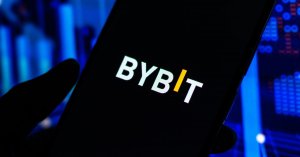FX Algos on the March?
Ivy Schmerken, Editorial Director, FlexTrade Algorithmic trading is gaining ground in foreign exchange among asset managers and pension funds that have been traditionally slower than hedge funds and CTAs in adopting these tools. Nearly one third of 2015 institutional FX volume was executed through algorithmic trading models, according to a recent Greenwich Associates global FX […]

Ivy Schmerken, Editorial Director, FlexTrade
Algorithmic trading is gaining ground in foreign exchange among asset managers and pension funds that have been traditionally slower than hedge funds and CTAs in adopting these tools.
Nearly one third of 2015 institutional FX volume was executed through algorithmic trading models, according to a recent Greenwich Associates global FX report. That is a sizeable jump from 2014 when about a quarter of total institutional flows were executed via algorithmic models, said Kevin McPartland, head of market structure and technology research at Greenwich Associates during a recent webinar, “FX Market Structure Update 2016.”
Nearly three quarters (73%) of institutional investors trade 76% of their global FX volume electronically, according to the Greenwich 2015 Global Foreign Exchange Study. The study was based on over 1,600 interviews with users from corporates, fund managers, hedge funds, banks, government entities and insurance companies, from the end of September through November 2015.

“This is certainly the most electronic market in the world if we look at other asset classes and it doesn’t seem to show any signs of slowing,” said McPartland during the webinar.
There is also growth in buy-side algorithmic usage in FX, which is mainly due to hedge funds and CTAs. All told, they executed 61% of their flows through algo tools in 2015, up from 33% proportion in 2014, stated Greenwich. Asset managers and pension funds also sent 21% of their FX volumes through algos in 2015, a 5% increase from 16% in 2015.
The fundamental difference lies in the way that hedge funds and asset managers utilize these mathematical models. Hedge funds use the algorithms for generating alpha, whereas asset managers use them in managing flows and for implementing portfolio strategies.
FX Algos Go Hand-in-Hand with Non-Bank Liquidity Providers
The uptick in algorithmic trading is occurring against a backdrop of more regulations with best execution requirements, and the influx of non-bank liquidity providers, such as principal market makers to compete with large banks.
“We are 100% tech enabled and quantitative,” said Michael Cahill, Head of Relationship Management, KCG Acknowledge FX, on the webinar. Initially the idea was to compete with banks by interacting with non-disclosed ECN flows and with direct disclosed relationships with retail aggregators and systematic hedge funds, explained Cahill. Now firms like KCG and others are hiring sales traders to compete with banks in the client segment.
Buy-side firms using algorithms may be interacting with non-bank liquidity providers and not realize it because they are embedded into the electronic market structure.
Sometimes they are using an algorithm in an anonymous pool, which is interacting with a non-banking liquidity source. Or, they could be working an order with an algorithm that is finding non-bank liquidity.

One panelist cited tremendous growth in direct streams where investors are taking multiple, continuous pricing stream from a variety of counterparties. Buy-side firms are able to aggregate the streams to form a customized market.
However, McPartland questioned whether electronic trading could reach a ceiling and what the next stage of market structure evolution could be.
A big portion of electronic trading in FX is still dominated by the request-for-quote model, an automated version of phone–based trading. Panelists maintained that the RFQ method is still valuable. “It allows for counterparty relationships to remain intact,” said McPartland. It also allows for more efficiency than conducting trades over the phone about 15 years ago.
Buy-side FX trading is still fragmented across different channels: 50% of FX volume is traded on multi-dealer platforms, 12% on single-dealer platforms, 17% on the phone, 9% on messaging systems Bloomberg and Reuters and 12% in other channels.
But these statistics don’t explain how much volume is going through algorithms or the RFQ model, argued one panelist.
Changes to Market Structure
As the global FX e-trading landscape evolves, experts predict more changes to the market structure. For the buy-side, “I think we’ll see a change in the market structure from RFQ to a more order-book style of trading,” said Chip Lowry, senior managing director, State Street Global Markets, during the webinar. “It could go to algo trading which, by definition, goes to order books, or perhaps to direct order book trading like we have in the equity world,” said Lowry.
But it’s not clear that the buy-side will rush into order book trading.
“There are certain aspects of RFQ that the buy-side values, one of which is risk-based prices,” said Michael O’Brien, director of global trading at investment manager Eaton Vance, speaking on the webinar. In the world of SEFs, order book trading was one of two options mandated by Dodd-Frank for swaps, with the other being RFQ. There wasn’t a lot of order-book adoption by the buy- side, he noted.

Downplaying the idea that order book trading on the buy-side is right around the corner, O’Brien said “I think the transparency of order books and everyone having access to that information would be a positive for market structure, but I don’t think we’re going to get there in a hurry,” he said.
Regulatory mandates have forced a number of changes upon the industry. The delay in final rules requiring non-deliverable forwards, or NDFs, to trade on SEFs, has fragmented liquidity and led to unintended consequences, noted State Street’s Lowry. Europe’s MiFID II steps up the focus on order execution policy so that best execution becomes a higher bar, added Lowry. As a result, firms will look for alternative ways to trade and algorithms are becoming a larger tool in the toolbox, he said.
Staying Power of RFQ
On the other hand, RFQ enables the buy-side to go out to three, four or five banks and show evidence that they obtained the best price at the time. It may be easier to understand. With an algorithm, it’s harder to say what the alternatives would be, said Lowry. “You can look at the individual slices and time stamp data, but there is no consolidated tape in the industry,” Lowry pointed out, noting the industry needs to do more with execution analysis.
In spite of some of these hurdles, there has been pick-up in currency algorithms on the buy-side. “It may not be as high as some people might expect,” said O’Brien. For example, Eaton Vance provides its team with a wide set of tools. In any given situation traders choose what is the best tool. “Algorithms are not always the best tools, so there could be a ceiling for adoption of algos,” suggested O’Brien. If someone is trading $5 million of a liquid currency, an algorithm may not be the best tool, he said.
In fact, one reason why RFQ may never go away is that when a buy-side is trading a security, it often wants to execute the currency at the same time, said one speaker. However, this is no longer the case. Today’s buy-side can automate the currency trade to occur simultaneously with the electronic securities trade.

“It takes time to understand which algo to use and when it would be appropriate,” added O’Brien. “Asset managers are not going to use an algorithm because it’s technology and it’s the next step in FX trading. There is more to the decision for asset managers in the FX world and it’s not that simple an equation.”
While the decision may be complicated, clearly the buy-side is becoming more comfortable with algorithmic strategies, and learning which ones work for their portfolios. Over time, the buy-side is expected to automate a higher percentage of its FX trades. Regulatory initiatives like MiFID II are pushing the buy side toward more efficient, transparent and automated methods of trading. Meanwhile, buy-side firms are increasingly interacting with non-bank liquidity providers, which are associated with streaming liquidity, electronic order books and automated trading. Ultimately, the vision is all-to-all trading, and adoption of FX algorithms is bound to grow.









